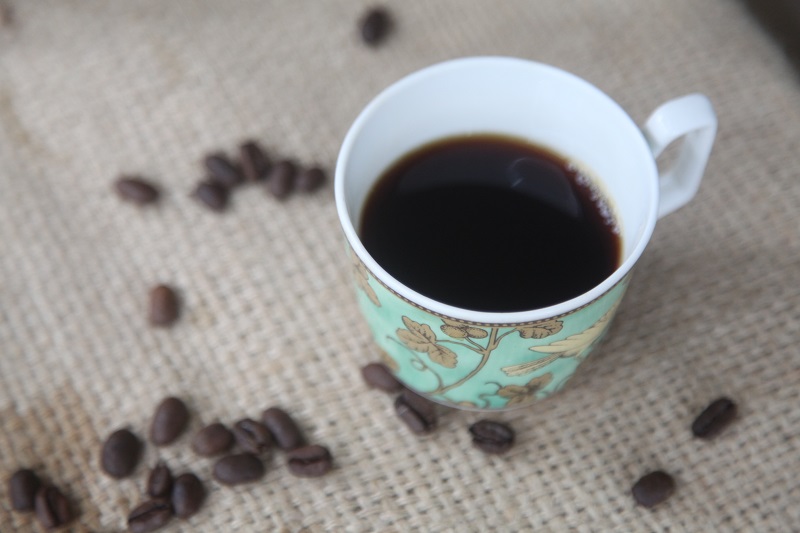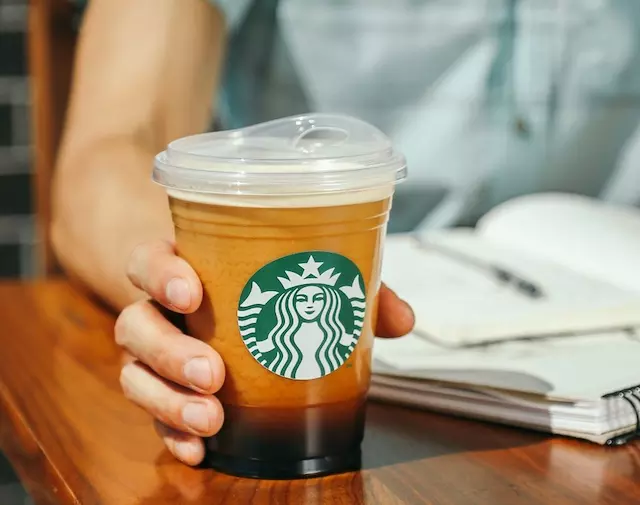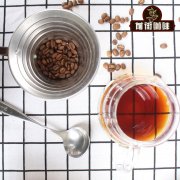What is Blue Bottle Coffee? A Blue Bottle Coffee Start-up Story from a Cart

Professional coffee knowledge exchange more coffee bean information please follow the coffee workshop (Wechat official account cafe_style)
Legend has it that Turkish troops swept through much of Eastern and Central Europe at the end of the 17th century and arrived in Vienna in 1683. The Viennese besieged and desperately needed an apostle to cross the Turkish line to the nearby Polish army for help. After a series of adventures, the Turkish-and Arabic-speaking Franz George Colshecki bravely completed the dangerous mission.
The Turks were forced to drive out of the city, leaving behind everything, including strange bags thought to be camel feed. Kohitsky lived in the Arab world for several years and knew that the coffee was a lot of coffee. Kohitsky used the money awarded to him by the mayor of Vienna to buy coffee, opened the first cafe (blue bottle) in Central Europe, and brought the coffee to grateful Vienna.
319 years later, in the early 1920s, in Oakland, California, a recalcitrant freelance musician and coffee maniac was so tired of the coffee available on the market and the old and overroasted coffee beans that he decided to turn on his own home roaster to provide people with the real taste of the fresh coffee beans they were breathing.
He built a 6-pound roaster and made a historic vow: "I only sell coffee that has been roasted for no more than 48 hours to my guests, so that they can enjoy the best moments of coffee beans." Raw materials use the best and most delicious coffee beans you can find, and choose the best source of coffee cultivation.
To commemorate Kohitsky's heroic deeds, he named his coffee shop with the "Blue bottle Coffee" he once used, starting another chapter in the history of super coffee. A shop name from the first coffee shop in Europe, which shows the founder James Freeman's ambition and high hopes for the brand: a pioneering coffee shop!
In February 2014, Blue bottle Coffee opened in Tokyo. Starting in San Francisco, Blue bottle, known as the "Apple of the coffee industry," officially went international. The trend swept through major media and social networking sites, and stores in San Francisco, New York and Tokyo became tourist pilgrimage attractions. After all, what kind of cultural trend has brought out such a delicate and rigorous coffee culture as blue bottle coffee?
▲ I know that Blue bottle Coffee is different. The cup of hand-brewed coffee that came out of a trailer in Oakland is now leaving the first place where I gained a foothold in San Francisco.
The third Coffee Wave (Third Wave of Coffee)
In San Francisco, the "third wave of coffee" led by blue bottle coffee has ushered in a new era of high-quality niche coffee (maintaining a niche market, at least at the start-up stage). The concepts of independent craftsmanship, small-scale production, and local ready-to-eat, which San Francisco has always been proud of, are thoroughly integrated into the coffee industry, or, perhaps, into the spirit of local craftsmanship.
Compared with the instant coffee culture represented by the first wave of instant coffee, and the second wave of deeply roasted coffee and metropolitan cafe culture initiated by coffee chains such as Starbucks and Peet's, the third wave of coffee emphasizes that each coffee bean has its own unique flavor depending on the variety, producing area, climate, treatment and brewing methods.
In addition, unlike the popular re-baking method in the past, blue bottle coffee is mostly light and medium-roasted to bring out the clear sour aroma and fruit flavor of top beans. Such a change is precisely the critical taste buds of San Francisco people, treat coffee with the rigorous approach of "wine tasting" and slow drinking attitude, and completely reform the world's view of coffee.
The entrepreneurial road from East Bay to San Francisco ── Blue bottle Coffee
San Francisco is the city with the highest concentration of independent coffee brands in the United States, and it is also a first-tier city where it is difficult for large coffee shops to seize the city. In terms of objective conditions, San Francisco has the highest rent in the United States, and the cost of opening a store is extremely high. In terms of cultural conditions, by virtue of the hippie culture of the 1960s and the Italian immigrants who moved to the North Beach, San Francisco has given birth to hippie coffee pubs and cultural coffee shops touted as Italian or American baking. coupled with the emergence of boutique cafes springing up today, San Francisco has always been the center of the coffee wave.
As early as 1966 at Berkeley in East Bay, there was a coffee chain Peet's Coffee & Tea, which insisted on brewing coffee of excellent quality, moderate exhibition shops, and maintaining the style of community-based coffee shops, which was very much in line with the cultural characteristics of San Francisco.
East Bay has a great impact on the diet and coffee territory of San Francisco. Blue bottle Coffee was born in ── Oakland (Oakland), a city that used to be predominantly blue-collar just south of Berkeley.
(note 1: blue bottle Coffee, founded in 2002, is located behind Dona Tomas, the Temescal Alley Mexican restaurant in what is now Oakland, without a physical storefront. )
Oakland is the most African-American area in northern California, with more factories, warehouses and abandoned land, compared with Berkeley, where house prices and shopping taxes are extremely high, like Harlem in New York and Manhattan. The entrepreneurial story of Blue bottle Coffee, so it has some elements of San Francisco's modern gold mining dream.
On December 13, 2003, founder James Freeman built up a reputation after selling coffee in a trailer in Oakland for a year and a half, and finally realized his biggest dream since selling coffee. ── entered San Francisco.
The Blue bottle Coffee Shop in ▲ Ferry Building. " The Ferry Plaza market was my graduate school, my gymnasium, my think tank, and my laboratory. Even though our drinks have never been more carefully prepared, sourced and roasted, we are at the point in our trajectory where our ambitions just don't fit outside the Ferry Building on Saturdays. "
The venue for the first trial is the Ferry Building Farmers' Market (Ferry Building Marketplace), a gourmet hall in San Francisco. In this top fashion market, vendors are all selected for a while. For Blue bottle, it is a front-line battlefield for first-time testing skills and accumulating experience.
The market is not like opening a shop. James Freeman, the headmaster and bell ringer, goes to the bakery of Temescal in Oakland to "stock" all kinds of coffee equipment in the early hours of every Saturday morning, and then goes to Thrifty Drugs across the street to buy ice cubes. On the Bay Bridge, many East Bay vendors also rushed into the city at this time, and the traffic was congested. Freeman driving dilapidated cars had to arrive at the Ferry Building at least before 6:30 in order to greet visitors on time when the market opened.
(note 2: Temescal is the oldest neighborhood in Oakland, located in North Auckland, next to Berkeley. This area is home to immigrants of different nationalities from all over the world, and African-American residents are still a large number. In recent years, Temescal Alley, which has been converted from old stables, is a new cultural settlement and is popular with local hipsters. )
Sometimes it was a cold, cloudy day and business was bad, but whenever Freeman handed the coffee to the guest, the throbbing of sharing the beautiful coffee cheered him up deeply.
▲ 's typical hazy December weather was wet, cold and rainy, and the crowd was not as high as expected, but when Freeman handed over the first cup of slow-dripping single-origin black coffee to the guest, he was deeply inspired by the throbbing time of personally interacting with the customer and experiencing the good coffee.
Slowly exhibit the shop and move towards the ultimate boutique
Two years later, countless people carrying instruments alone, the journey from East Bay to San Francisco no longer seems so far away. He started with a few helpers, and Blue bottle became the most popular coffee shop in the farmer's market. Despite the long line, he insisted on "cup hands dripping slowly" and "never sell coffee beans that have been roasted for more than 48 hours."
The signature "New Orleans Ice drop Coffee" (New Orleans Iced Coffee), with his secret formula chicory (Chicory) ground powder, special sweet smell and now cold iced coffee, hot kneading and brewing technology is particularly exquisite. Gradually, Blue Bottle has become a synonym for San Francisco people looking for high-quality, good coffee.
As you probably know the later story, Blue bottle's first physical Coffee Kiosk (caf é) opened in Hayes Valley in 2005, leading the competition in the highly competitive San Francisco coffee circle with the use of single-origin, fresh, organic, high-quality coffee beans and the superb craftsmanship of cup hand dripping.
Blue bottle Coffee's first full-scale cafe did not welcome guests at Mint Plaza near the city until 2008, with a small storefront, with long community table and backless high chairs, demonstrating Blue bottle's unique "standing food" culture rooted in the streets.
Looking ahead, four large Japanese siphon pots (Syphon) inhale and spit brightly, each running for 16 hours with a cold drip coffee machine and a whole row of hand coffee utensils. Shop assistants don't usually urge guests to order, and the whole blue bottle culture begins with eye contact with yuppie clerks.
In 2009, Freeman returned to the Ferry Building to open a third physical storefront, and the coffee vendors outside were still operating as usual, but there was a permanent spot inside the building to satisfy diners who wanted to taste the blue bottle at any time. There are only two coffee shops in the whole ferry building, one is Peet's and the other is Blue bottle.
In May of the same year, Blue bottle entered SFMOMA (San Francisco Hyundai gallery), becoming another epoch-making move on the road to the ultimate boutique coffee. Caitlin Freeman, the owner's wife, is an ingenious pastry chef. She has launched 27 SFMOMA series desserts, which turn the classics of Andy Warhol, Mattis and Cindy Sherman into delicious works of art.
A historic choice
For Bay area residents who do not live in San Francisco, the dealership of Blue bottle coffee released to other channels is very precious, but after Blue bottle has gained a foothold, it suddenly changed its business strategy, withdrawing the agency rights of all channels in one fell swoop. In April 2014, it launched the portable paper canned New Orleans iced coffee and entered the organic supermarket chain Whole Foods. As a result, the market was in short supply and was often out of stock. In April 2016, Blue bottle launched its original canned cold-soaked black coffee, which is now available at Blue bottle stores.
Many regular customers hope that Blue bottle Stay Small, Stay Local, do not need to enter other cities and towns, quickly show stores, do not need to turn the table rate as an operational indicator, and so on, so as not to lose their original innocence and persistence.
However, on May 4, 2015, Freeman still wrote a farewell message from Blue bottle to the Ferry Building:
"the stalls in the ferry building market are my alma mater, my training ground, my cradle of thinking and the experimental research center. Even after 11 years, our coffee is still as carefully collected, roasted and prepared as at first, but now the market vendors outside the ── ferry building, a tipping point on this track, can no longer hold the ambition of blue bottle coffee. "
One day last May, my friend said to me, "would you like to have the last cup of coffee of Blue bottle at the Ferry Building vegetable market this Saturday?" I know that Blue bottle Coffee is different. The cup of hand-brewed coffee from the Oakland trailer is now about to say goodbye to the first place where I gained a foothold in San Francisco.
This is undoubtedly a difficult decision. As a member of San Francisco, I don't know how long Blue bottle will go into the world, or whether there is a bigger dream than the Tokyo exhibition store. All I know is that on May 30, 2015, the Blue bottle stall outside the San Francisco Ferry Building sold the most coffee ever, and the proceeds went to the non-profit Sustainable Agricultural Development Organization.
The scene of Freeman, who has not shown up for a long time, makes coffee himself and greets guests, which is a little rusty and sentimental. Unlike the noisy and lively market taste in the past, it is a picture worth remembering forever in the history of coffee. We may not be ready, but Blue bottle is ahead!
Important Notice :
前街咖啡 FrontStreet Coffee has moved to new addredd:
FrontStreet Coffee Address: 315,Donghua East Road,GuangZhou
Tel:020 38364473
- Prev

Starbucks promises to abolish disposable straws in all its coffee shops by 2020
For more information on coffee beans, please follow the coffee workshop (Wechat official account cafe_style). According to Japan's Yomiuri Shimbun, US coffee chain giant Starbucks announced on the 9th that all Starbucks stores will stop using disposable plastic straws by the end of 2020. Starbucks also called for plastic straws to pollute the ocean.
- Next

What's the difference between blue bottle coffee and Starbucks coffee? blue bottle coffee tastes good.
Professional coffee knowledge exchange more coffee bean information Please follow the coffee workshop (Wechat official account cafe_style) when it comes to coffee, what is the first thing that comes to mind? There are all kinds of packaged instant coffee in the supermarket, Starbucks and Louisa in the roadside chain coffee shop, or hand-made black coffee in independent cafes with daily specials. As coffee goes deeper and deeper into people's daily life
Related
- What brand of black coffee is the most authentic and delicious? what are the characteristics of the flavor of the authentic Rose Summer Black Coffee?
- Introduction to the principle and characteristics of the correct use of mocha pot A detailed course of mocha pot brewing coffee is described in five steps.
- Which is better, decaf or regular coffee? how is decaf made?
- How much is a bag of four cat coffee?
- How about four Cat Coffee or Nestle Coffee? why is it a cheap scam?
- Which is better, Yunnan four Cats Coffee or Nestle Coffee? How about cat coffee? is it a fake scam? why is it so cheap?
- How about Cat Coffee? what grade is a hoax? which instant coffee tastes better, four Cat Coffee, Nestle Coffee or G7 coffee?
- Process flow chart of coffee making-Starbucks coffee making process what coffee tastes good at Starbucks
- The top ten best coffee beans in the world Rose summer coffee or Tanzanian coffee tastes good
- Yunnan four cat coffee is good to drink?_four cat coffee is a big brand? four cat blue mountain coffee is fake?

